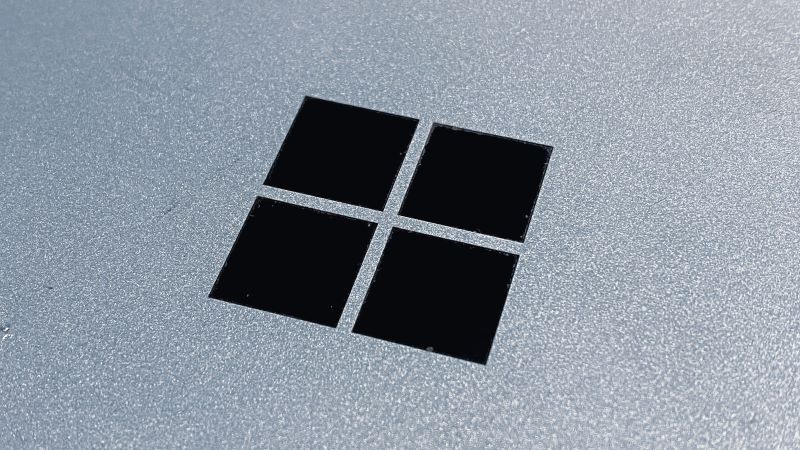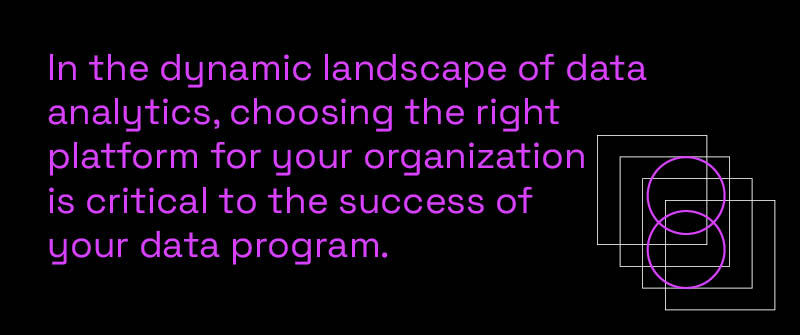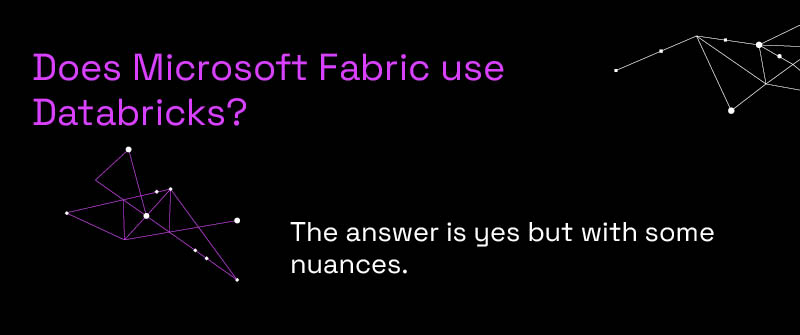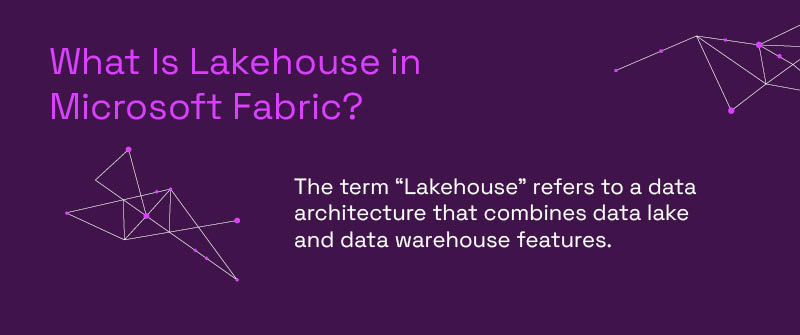
In the dynamic landscape of data analytics, choosing the right platform for your organization is critical to the success of your data program. Among the myriad options available, Microsoft Fabric Data Analytics and Databricks are two prominent contenders. In this article, we look to uncover the distinctions between them while also delving into their respective pros and cons and the unique concept of the Microsoft Fabric vs. Databricks Lakehouse. Whether you’re kickstarting your data project or looking to get it back on track, this exploration will provide valuable insights to guide your decision-making process.

What Is the Difference Between Microsoft Fabric and Databricks?
To kick things off, let’s take a look at the match-up – Microsoft Fabric Data Analytics vs. Databricks. Both are formidable players in the data analytics field, but they each have their unique features and capabilities.
Microsoft Fabric
Microsoft Fabric Data Analytics is a relatively new, comprehensive data platform that is becoming known for its versatility. It is designed to handle a diverse array of data-related tasks, ranging from data ingestion and processing to analysis and reporting. With its wide-ranging capabilities, Microsoft Fabric Data Analytics is an attractive option for organizations of all sizes and industries. Check out a the Microsoft Fabric Tutorial.
Microsoft Fabric offers a unified environment for data engineering, data science, machine learning, and business intelligence. It is built on top of Azure Synapse Analytics and Azure Data Factory, providing seamless integration with various Azure technologies, including Power BI, Azure Databricks, and Azure Machine Learning making it ideal for those already invested in the Microsoft ecosystem and seeking a cohesive data analytics solution.
Databricks
Conversely, Databricks is most known for its innovative Lakehouse architecture—a revolutionary approach that seamlessly integrates data lake and data warehouse functionalities. Databricks provides a unified platform for data engineering, data science, and analytics, prioritizing collaboration, scalability, and performance. It is mainly used by businesses managing large datasets and needing advanced analytics capabilities, as it facilitates efficient collaboration among engineers, analysts, and data scientists for quicker insight extraction.
Does Microsoft Fabric use Databricks?
One common question that arises is whether Microsoft Fabric incorporates Databricks technology into its offering. The answer is yes but with some nuances. Microsoft Fabric can indeed integrate with Databricks, allowing users to leverage the strengths of both platforms. This integration can be especially advantageous when you require the advanced capabilities of Databricks alongside the versatility of Microsoft Fabric.

Is Microsoft Fabric a competitor to Databricks?
While Microsoft Fabric and Databricks can work together harmoniously, they can also be seen as competitors in some scenarios. The choice between the two often hinges on your organization’s specific goals and requirements.
If your organization’s primary focus is on data analytics and processing, Microsoft Fabric might be a more cost-effective choice. It offers a unified environment that covers a wide spectrum of data-related tasks and seamlessly integrates with other Microsoft services. This makes it an appealing option for organizations that value versatility and cost-efficiency.
On the other hand, if your data analytics projects demand specialized data science capabilities, optimized Spark performance, and advanced features like Delta Lake, Databricks could be the better fit. Databricks’ cloud-agnostic approach and comprehensive toolset make it an ideal choice for organizations looking to excel in big data processing and machine learning.
In conclusion, the choice between Microsoft Fabric Data Analytics and Databricks is not just about selecting a platform but about aligning with your organization’s unique goals, budget constraints, and the complexity of your data analytics projects. Both platforms offer distinctive advantages, and your decision should reflect your precise needs.
What Is Lakehouse in Microsoft Fabric?
In the context of Microsoft Fabric, the term “Lakehouse” refers to a data architecture that combines data lake and data warehouse features. This approach offers the flexibility of a data lake, where you can store vast amounts of raw data with the structured querying and performance optimization capabilities of a data warehouse. Microsoft Fabric’s Lakehouse architecture enables you to handle data in a more agile and efficient manner.

Does Microsoft Fabric use Delta Lake?
Microsoft Fabric can integrate with Delta Lake—a powerful open-source storage layer that brings ACID transactions to data lakes. By incorporating it, Microsoft Fabric enhances data reliability, transactional consistency, and data quality, making it a compelling choice for organizations that prioritize data integrity.
Why Would I Use Microsoft Fabric?
To make an informed decision, it’s important to weigh the advantages and disadvantages of Fabric.
Pros:
- Versatility: Fabric excels in diverse data-related tasks, making it suitable for various use cases.
- Integration: Seamlessly integrates with other Microsoft services, such as Azure Data Lake Storage and Azure Synapse Analytics.
- Cost-Effectiveness: Offers cost advantages for organizations that don’t require the full spectrum of Databricks capabilities.
- Scalability: Can effortlessly scale to accommodate growing data volumes and evolving analytics needs.
- User-Friendly: Known for its user-friendly interface, making it accessible to a broad audience.
Cons:
- Limited Specialization: This may not provide the specialized features and capabilities required for highly specific data science projects.
- Relative Youth: Being new to the analytics scene is not a con in itself but can make it challenging for an organization to recruit and retain top talent.
In conclusion, the choice between Microsoft Fabric Data Analytics and Databricks hinges on your organization’s unique goals, budget constraints, and the complexity of your data analytics projects. Both platforms offer distinctive advantages, and your decision should align with your precise needs. If you’re seeking further guidance or looking to kickstart your data project or bring it back on track, we invite you to reach out for more information. Our team of Microsoft Fabric consulting experts is dedicated to helping you make the right choice for your data analytics journey.
Get in touch with a P3 team member